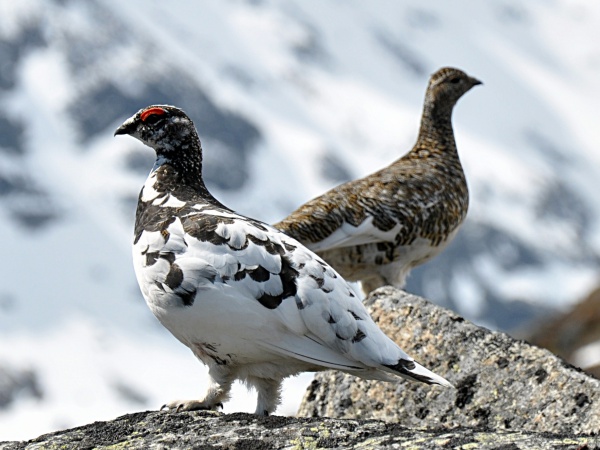Facts About Rock ptarmigan
The rock ptarmigan, a medium-sized bird in the grouse family, is known by various names depending on the region. In the UK and Canada, it is often simply called the ptarmigan. In Japan, it is referred to as "raichō" and even serves as the official bird for some prefectures. The bird’s scientific name, *Lagopus muta*, has intriguing origins: “Lagopus” translates to “hare foot” in Greek, highlighting its feathered feet, while “muta” is Latin for “mute.” The name “ptarmigan” itself is derived from the Scottish Gaelic word “tàrmachan.”
One of the most fascinating aspects of the rock ptarmigan is its seasonal camouflage. In winter, its feathers turn white to blend seamlessly with the snowy landscape. As spring arrives, they shift to brown to match the rocky terrain and tundra where it resides.
These birds are found in the Arctic and subarctic regions of Eurasia and North America, typically inhabiting rocky mountainsides and tundra. Due to their remote habitats, they face few natural predators. Their diet consists of birch and willow buds, insects, seeds, and berries.
Breeding is a captivating period for rock ptarmigans. Males flaunt combs above their eyes during courtship displays, with the size of these combs correlating to their testosterone levels and mating success. They mature quickly, reaching sexual maturity at just six months old, and can produce up to six chicks in a single brood.
During the last ice age, rock ptarmigans were far more widespread across continental Europe. Nowadays, they have been introduced to various islands and even spend winters in the Russian High Arctic. Despite the harshness of their environment, rock ptarmigans maintain a stable population, thanks to their high breeding rate.

 Russia
Russia